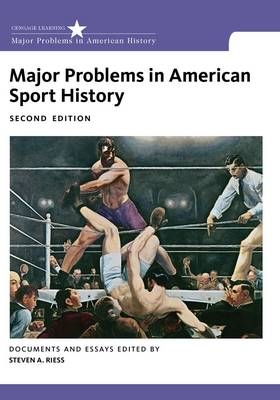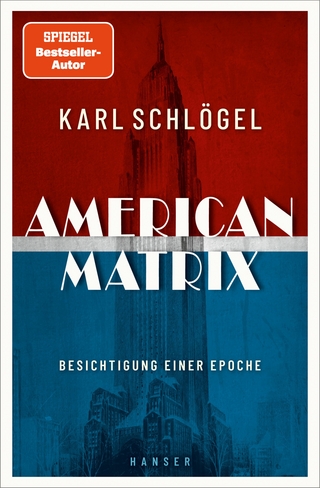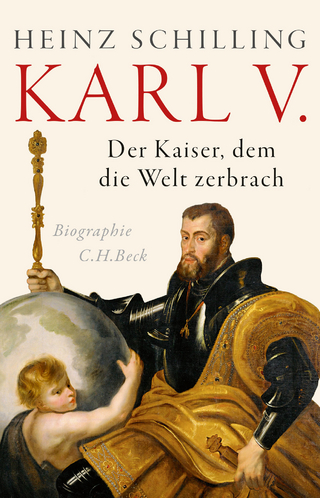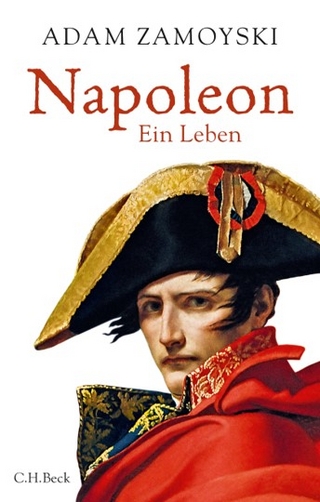
Major Problems in American Sport History
Wadsworth Publishing Co Inc (Verlag)
978-1-133-31108-9 (ISBN)
This book presents essential, readable, and provocative documents and essays that illuminate the American sporting experience from a variety of viewpoints. A volume in the Major Problems In American History series, it is designed to encourage critical thinking about history. The documents are primary sources, selected for how they illustrate major developments in the rise of sport, and often, for how they illuminate the accompanying essays. They include government reports, court cases, contemporary newspaper articles, diary entries, and advertisements for athletic equipment. The essays were chosen to cover broadly the field of sport history, based on the particular significance of each essay to our understanding of sport history as well as the quality of the writing, research, and analysis. Introductions and headnotes for the readings provide context to help students better understand the material.
Thomas G. Paterson, professor emeritus of history at the University of Connecticut, graduated from the University of New Hampshire (B.A., 1963) and the University of California, Berkeley (Ph.D., 1968). He is the author of Soviet-American Confrontation (1973), Meeting the Communist Threat (1988), On Every Front (1992), Contesting Castro (1994), America Ascendant (with J. Garry Clifford, 1995), and A People and a Nation (with Mary Beth Norton et al., 2001). Tom is also the editor of Cold War Critics (1971), Kennedy's Quest for Victory (1989), Imperial Surge (with Stephen G. Rabe, 1992), The Origins of the Cold War (with Robert McMahon, 1999), Explaining the History of American Foreign Relations (with Michael J. Hogan, 2004), and Major Problems in American Foreign Relations (with Dennis Merrill, 2010). With Bruce Jentleson, he served as senior editor for the Encyclopedia of American Foreign Relations (1997). A microfilm edition of The United States and Castro's Cuba, 1950s-1970s: The Paterson Collection appeared in 1999. He has served on the editorial boards of the Journal of American History and Diplomatic History. A recipient of a Guggenheim fellowship, he has directed National Endowment for the Humanities Summer Seminars for College Teachers. In 2000 the New England History Teachers Association recognized his excellence in teaching and mentoring with the Kidger Award. Besides visits to many American campuses, Tom has lectured in Canada, China, Colombia, Cuba, New Zealand, Puerto Rico, Russia, and Venezuela. He is a past president of the Society for Historians of American Foreign Relations, which in 2008 honored him with the Laura and Norman Graebner Award for "lifetime achievement" in scholarship, service, and teaching. A native of Oregon, Tom is now informally associated with Southern Oregon University.
1. WHAT IS SPORT HISTORY? ESSAYS. Melvin L. Adelman, "Modernization and the Rise of American Sport." Stephen Hardy, "Urbanization and the Rise of Sport." Daniel Nathan, "Counter-Memories and the Black Sox Scandal." Jaime Schultz, "The New Cultural Sport History." 2. SPORT IN COLONIAL AMERICA. DOCUMENTS. King James I Identifies Lawful Sports in England, 1618. Restrictive Sabbath Statutes Enacted in Boston General Court, 1653. William Byrd Observes a Fire Hunt. An Englishman's Positive Impressions of Virginia Racing, 1772. Elkanah Watson's Misgivings on Cockfighting, 1787. George Catlin Describes a Choctaw Lacrosse Match, c. 1830s. ESSAYS. Timothy H. Breen, "The Cultural Significance of Gambling Among the Gentry of Virginia." Nancy Struna, "Sporting Life in the Taverns." 3. TRADITIONAL SPORT AND THE MALE BACHELOR SUBCULTURE, 1800-1860. DOCUMENTS. Andrew Jackson Challenges Charles Dickinson to a Duel, and the Response, 1806. The Negative Image of Billiards in Early America. The Great Foot Race of 1835. Horace Greeley Decries the Slaughter of Boxer Thomas McCoy, 1842. A Policeman Visits the Dissipated Rat Pits of Boston, c. 1860. The New York Herald Reports on "The Great Contest: Fashion v. Peytona," 1845. ESSAYS. Elliott J. Gorn, "The Social Significance of Gouging in the Southern Backcountry." James Parton, "The Jackson-Dickinson Duel of 1806." Sergio Lussana, "Slave Boxers on the Ante-Bellum Plantation." 4. THE MAKING OF A MODERN SPORTING CULTURE, 1840-1870. DOCUMENTS. Thomas W. Higginson Analyzes the American Clergy and Their Need for Physical Fitness, 1858. Catharine Beecher Criticizes Women's Frailty and Recommends What Should Be Done about It, 1855. The New York Knickerbocker Rules of Baseball, 1845. The New York Times Recommends Skating at Central Park, 1859. The New York Herald Compares Cricket and Baseball, 1859. The Spirit of the Times Examines the Founding of the New York Athletic Club, 1868. ESSAYS. John R. Betts, "The Making of a Positive Sports Ideology in Ante-Bellum America." George B. Kirsch, "Baseball Spectators, 1855-1870." 5. HIGHER EDUCATION AND THE GROWTH OF AMERICAN AMATEUR SPORT, 1890-1940. DOCUMENTS. The New York Times Reports on an International Match: The Harvard- Oxford Boat Race, 1869. Coach Walter Camp on Sportsmanship, 1893. Richard Harding Davis Scrutinizes the Rituals of the Thanksgiving Day Football Game, 1893. Henry Beach Needham Decries the Professionalization of College Athletes, 1905. Alice Katherine Fallows on Sports at Vassar and Wellesley Colleges. Hildrus A. Poindexter, "Football at Lincoln University, an Historically Black College." ESSAYS. Robin D. Lester, "The Rise of the Spectator, the Coach, and the Player at the University of Chicago, 1895-1905." Scott A. McQuilkin, "Summer Baseball and the College Amateur Tradition." 6. SPORT AND THE RISE OF THE INDUSTRIAL RADIAL CITY, 1870-1930. DOCUMENTS. The New York Times Evaluates the Accessibility and Utility of Central Park, 1873, 1875. The New York Times Lauds Baseball and Community Pride, 1888. The New York Times Considers Madison Square Garden as a Civic Institution, 1900. Mayor Quincy of Boston Supports Municipal Swimming Pools, 1898. Barney Ross, "The Mean Streets of Chicago in the 1920s and the Making of a Prize Fighter." ESSAYS. Roy Rosenzweig, "The Working-Class and the Parks of Worcester in the Late Nineteenth Century." Steven A. Riess, "Professional Sports and New York's Tammany Machine, 1890-1920." 7. SPORT AND CLASS, 1870-1930. DOCUMENTS. The Apex of Professional Track: The Astley Belt Race of 1879. Caspar W. Whitney Probes the Evolution of the Country Club, 1894. Philip G. Hubert, Jr., Reflects on the Bicycle: The Marvel of Its Day, 1895. Bertha Damaris, "An Elite Chicago's Women's Sports Organization: The Chicago Women's Athletic Club." Charles J. Lucas Criticizes the Commercialization of Amateur Athletics, 1906. ESSAYS. Donald Mrozek, "Sporting Life as Consumption, Fashion, and Display-Pastimes of the Rich at the Turn of the Century." Steven A. Riess, "Sport and the Redefinition of American Middle-Class Masculinity, 1840-1900." 8. THE COMMERCIALIZATION AND PROFESSIONALISM OF SPORTS, 1870-1930. DOCUMENTS. The New York Sun's Portrayal of a Typical Baseball Crowd, 1884. John Montgomery Ward Asks, "Is the Base-ball Player a Chattel?" Josiah Flynt Delineates the Evils of Off-Track Poolrooms, 1907. H. Addington Bruce Analyzes Baseball and the National Life, 1913. Supreme Court Justice Oliver Wendell Holmes, Jr., Explains Why Baseball Is Not Subject to Antitrust Laws, 1922. ESSAYS. Robert K. Barney and Frank Dallier, "The Making of the National League." Guy Reel, "Richard Fox and the Modernization of the Squared Circle in the Late Nineteenth Century." PHOTOGRAPH ESSAY: Uniforming Sportswomen. 9. GENDER AND SPORT IN MODERN AMERICA, 1870-1940. DOCUMENTS. Theodore Roosevelt Explains How Sport Makes Boys into Men, 1900. Theodore Roosevelt Advocates Amateur Boxing. Annie Londonderry Cycles Around the World in 1894-1895. Anne O'Hagan Describes the Athletic American Girl in 1901. Senda Berenson Asserts the Value of Adapted Women's Basketball, 1901. Dr. Dudley A. Sargent Asks, "Are Athletics Making Girls Masculine?", 1912. J. N. Cuneo, "The Early Career of Car Racer Joan N. Cuneo, 1905-1908." ESSAYS. Elliott J. Gorn, "Manliness in the Squared Circle." Rita Liberti, "Sport and Image Among African American College Women in the 1920s and 1930s." 10. RACE AND ETHNICITY IN AMERICAN SPORT, 1900-1940. DOCUMENTS. Richard Henry Pratt Encourages Indian Sportsmanship, c. 1894. The Outlook's Dismay with Indian Sportsman Jim Thorpe and the Forfeiture of His Olympic Medals, 1913. Prejudice Against African-American Ballplayers in the St. Louis Post-Dispatch, 1911. Frazier "Slow" Robinson, "I Caught Satchel Paige in the 1930s." The Chicago Commission on Race Relations Examines Racial Contact Recreation in the Late 1910s. Frederic M. Thrasher, "Ethnic Gangs Fight Over Park Turf in Chicago, 1921." W. Montague Cobb, "Is There a Connection Between Race and Speed?" ESSAYS. Gail Bederman, "Remaking Manhood through Race and 'Civilization': The 1910 Jeffries-Johnson Fight and Its Impact." Gary Ross Mormino, "Sport in an Italian American Community, St. Louis, 1925-1941." 11. SPORTS HEROES, HEROINES, AND AMERICAN CULTURE, 1900-1945. DOCUMENTS. Frank Merriwell at Yale, "Commonweal Memorializes Christy Mathewson, a Real-Life Merriwell, 1925." The Black Sox Scandal and the Fallen Hero: The Confession of Joe Jackson, 1920. Babe Ruth, the New American Sports Hero. Joe Louis as African American Hero: The Reminiscences of Maya Angelou. ESSAYS. John M. Carroll, "Red Grange and American Sport Heroes of the 1920s." Susan E. Cayleff, "Babe Didrikson Zaharias: The 'Texas Tomboy'". Dominic J. Capeci, Jr., and Martha Wilkerson, "Joe Louis, African American Hero and American Hero, 1935-1945." 12. THE IMPACT OF TITLE IX ON AMERICAN WOMEN IN SPORT. DOCUMENTS. Wilma Rudolph and the 1960 Summer Olympics. Billie Jean King Remembers Life as an Outsider in the 1950s and 1960s. Title IX of the Education Amendment of 1972, Its Components, and the Three Prong Rule. Baylor University Athletic Director Grant Teaff Criticizes the Impact of Title IX on Intercollegiate Football, 1993. Brown University Sued for Violating Title IX, 1996. ESSAYS. Susan K. Cahn, "The All-American Girls Baseball League, 1943-1954." Ronald A. Smith, "Title IX and Government Reform in Women's Athletics." 13. SPORT AND RACE IN AMERICA SINCE 1945. DOCUMENTS. Yankees President Larry McPhail's Plan to Discourage Integration of Baseball, 1946. Jackie Robinson on the Struggles of His First Spring Training, 1946. The Thoughts of Muhammad Ali in Exile, c. 1967. Harry Edwards Reviews the Making of the Black Athletic Revolt, 1967. Bruce Keidan, "Roberto Clemente: Baseball's 'Magnificent Militant'". ESSAYS. Jules Tygiel, "A Lone Negro in the Game: Jackie Robinson's Rookie Season." David Zang, "Understanding Muhammad Ali." 14. THE BUSINESS OF SPECTATOR SPORT, 1945-2012. DOCUMENTS. Norris Poulson Reveals How Los Angeles Got the Brooklyn Dodgers in 1958. Justice Thurgood Marshall Dissents in the Curt Flood Case, 1972. The Arbitrator's Ruling in the Case of John A. Messersmith and David A. McNally. The Dowd Report on Pete Rose and Gambling on Baseball. George J. Mitchell, "The Report on Enhancement Performing Drugs in Major League Baseball." Congressman Dennis Kucinich on the Failure of Stadiums and Arenas to Positively Impact Their City's Economy. The Value of Major League Sports Franchises, 2000-2011. ESSAYS. Michael Oriard, "The NCAA Monopoly: Revenue, Reform, and Exploitation." Michael Oriard, "The NFL as Big Business." Steven A. Riess, "Major League Franchises, Ballparks, and Public Policy, 1953-2012." 15. THE GLOBALIZATION OF AMERICAN SPORT. DOCUMENTS. Manager Zack Farmer of the Xth Olympiad Recommends that the United States Olympic Committee Cancel the 1932 Olympics in Los Angeles. Counsel George S. Messersmith Advises U.S. to Boycott 1936 Olympics in Berlin. President John F. Kennedy, "Physical Fitness and National Security During the Cold War." Should the U. S. Send a Major League Baseball Team to Cuba in 1975? President Jimmy Carter, "Why the United States Should Boycott the 1980 Olympic Games in Moscow." ESSAYS. Louis A. Perez, Jr., "The National Pastime Comes to Cuba." Donald Abelson, "Politics on Ice: The United States, the Soviet Union, and a Hockey Game in Lake Placid."
| Verlagsort | Belmont, CA |
|---|---|
| Sprache | englisch |
| Maße | 189 x 246 mm |
| Gewicht | 635 g |
| Themenwelt | Geisteswissenschaften ► Geschichte ► Regional- / Ländergeschichte |
| Sozialwissenschaften ► Pädagogik | |
| Weitere Fachgebiete ► Sportwissenschaft | |
| ISBN-10 | 1-133-31108-3 / 1133311083 |
| ISBN-13 | 978-1-133-31108-9 / 9781133311089 |
| Zustand | Neuware |
| Haben Sie eine Frage zum Produkt? |
aus dem Bereich


